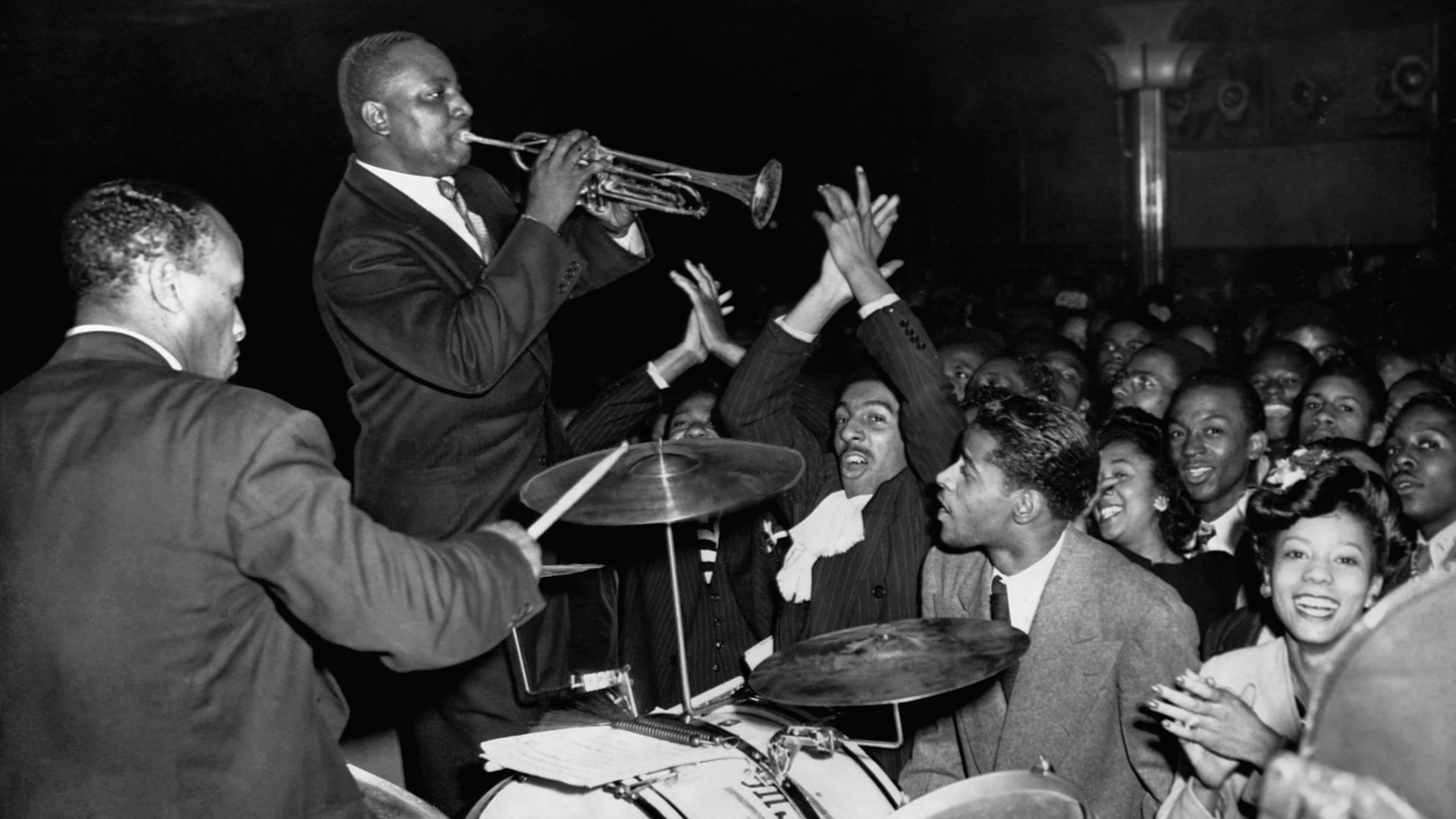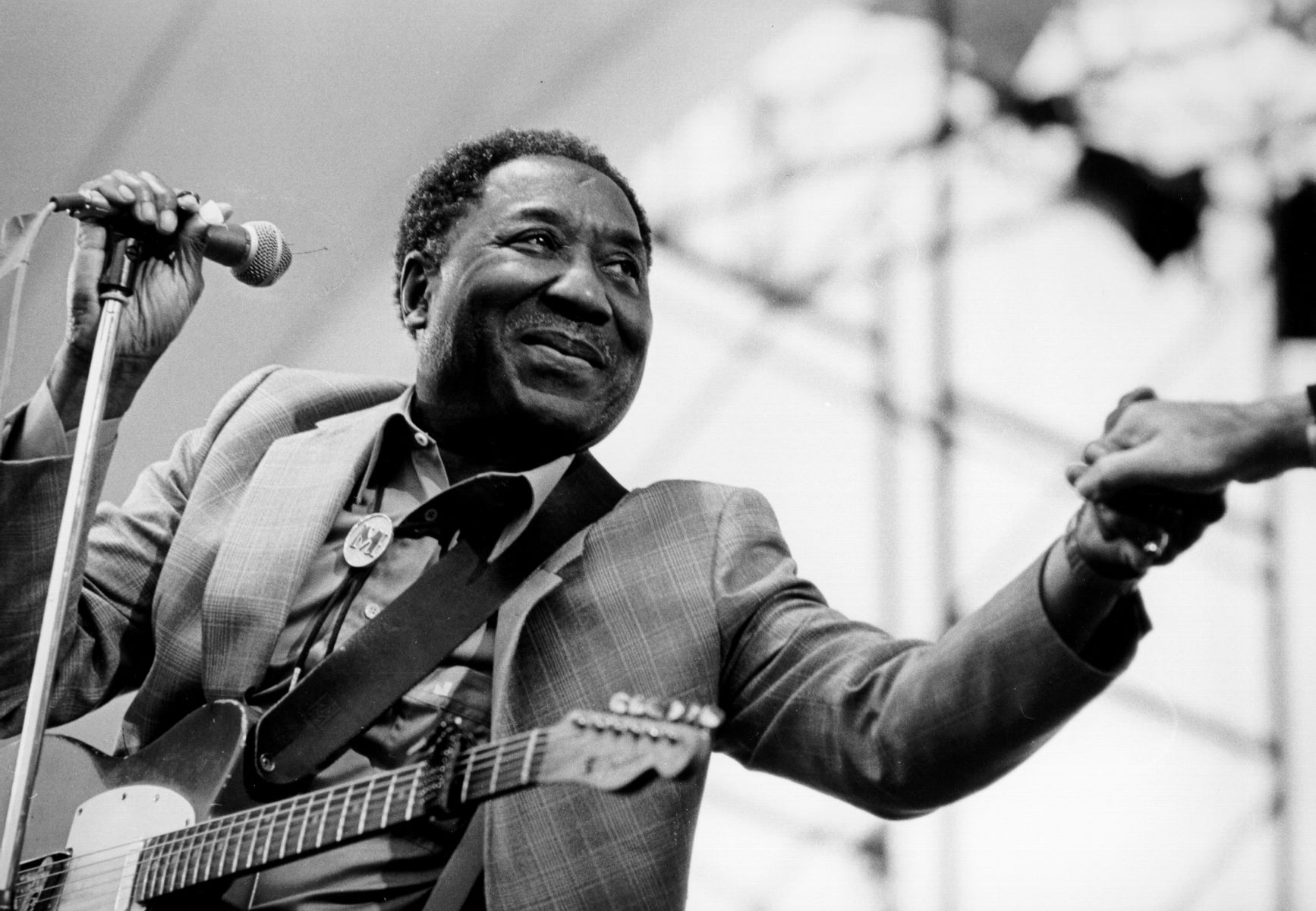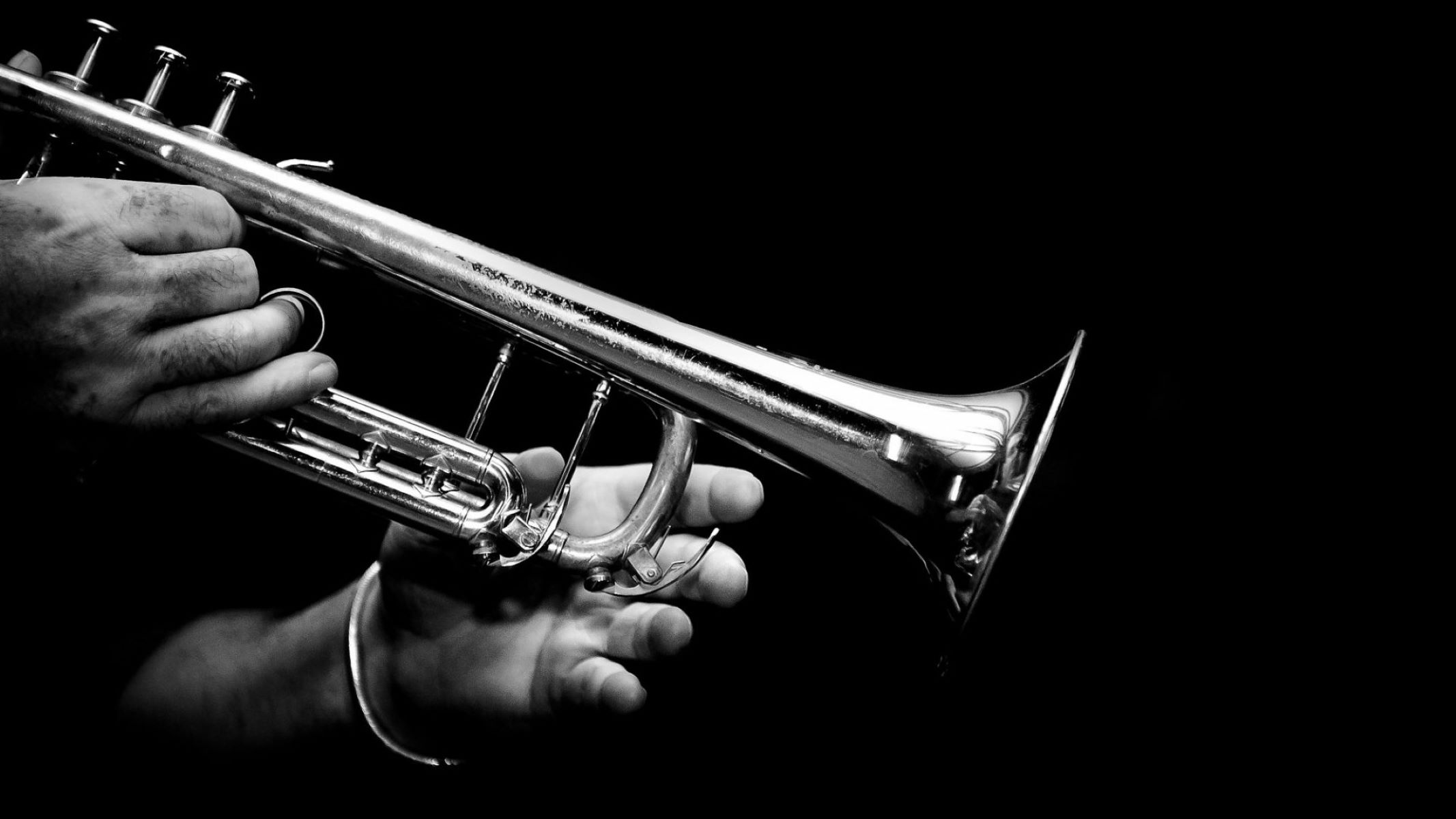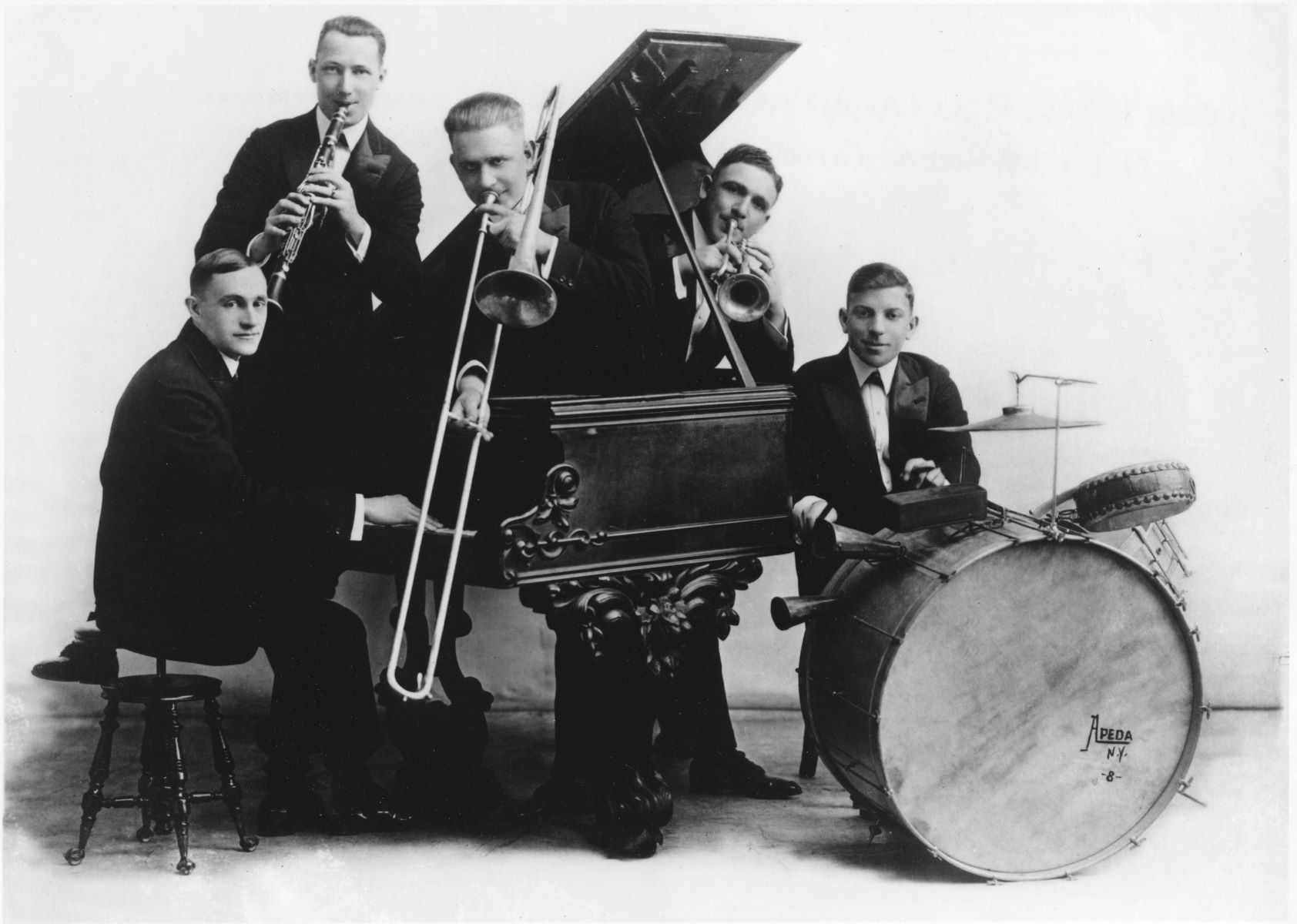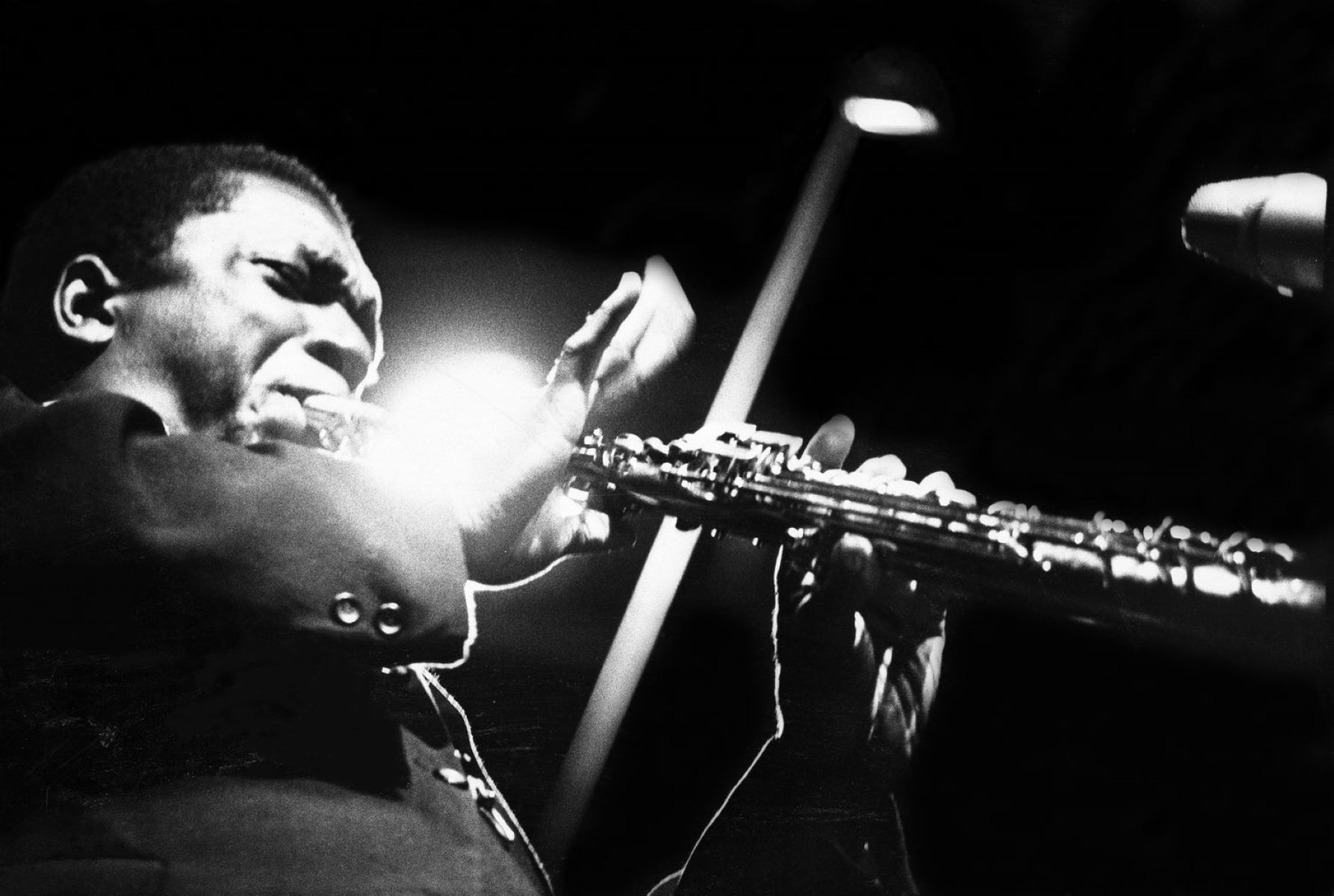Home>Genres>Jazz>How Did Jazz Spread From Its Roots In The 1920S


Jazz
How Did Jazz Spread From Its Roots In The 1920S
Modified: February 18, 2024
Discover how jazz evolved and spread from its origins in the 1920s, influencing music and cultures worldwide. Embrace the vibrant history and global impact of jazz.
(Many of the links in this article redirect to a specific reviewed product. Your purchase of these products through affiliate links helps to generate commission for AudioLover.com, at no extra cost. Learn more)
Table of Contents
Introduction
Jazz, with its soulful melodies, improvisation, and rich cultural heritage, has captivated audiences worldwide. This uniquely American music genre emerged in the early 20th century and quickly gained popularity, especially during the vibrant and electrifying Jazz Age of the 1920s. Born out of African and European musical traditions, jazz became an expression of freedom and a voice for marginalized communities.
The roots of jazz can be traced back to the African slave trade, where enslaved Africans brought their musical traditions and rhythms to the New World. These musical traditions, combined with European harmonies and instruments, resulted in a fusion of styles that laid the foundation for jazz. The growth of jazz was also heavily influenced by cultural phenomena such as the Harlem Renaissance and advancements in technology like recordings and radio.
The Jazz Age, also known as the Roaring Twenties, was a time of cultural and social change in the United States. It was a period marked by economic prosperity, the rise of consumerism, and a sense of liberation from the restrictions of the past. Jazz music encapsulated the spirit of this era, providing a soundtrack to the carefree lifestyle of the flapper generation and the decadence of the speakeasy culture.
During the 1920s, jazz experienced a surge in popularity with the proliferation of recordings and the advent of radio. These technological advancements allowed jazz to reach a wider audience, transcending geographical boundaries. It became a form of entertainment that could be enjoyed by people from all walks of life, breaking down social barriers and creating a sense of unity.
The Harlem Renaissance, a cultural and intellectual movement centered in Harlem, New York City, played a pivotal role in the development and popularization of jazz. Harlem became a hotspot for African American musicians and artists, attracting talent from all over the country. The vibrant nightlife scene in Harlem’s clubs and speakeasies gave birth to some of the most iconic jazz performers of the era.
Jazz also spread geographically during the 1920s, as African American musicians migrated from the South to major cities like Chicago and New York City. These cities became hubs of jazz activity, nurturing innovation and providing opportunities for musicians to collaborate and showcase their skills. New Orleans and Kansas City also played significant roles in the proliferation of jazz, each contributing its own unique flavor and style.
The 1920s saw the rise of influential jazz musicians who shaped the genre and left a lasting legacy. Artists such as Louis Armstrong, Duke Ellington, Jelly Roll Morton, and Bessie Smith became household names and introduced jazz to audiences around the world.
In this article, we will delve into the origins of jazz, explore its impact during the Jazz Age, discuss the role of the Harlem Renaissance and technological advancements, and examine the migration and spread of jazz through major cities like Chicago and New York City. Join us on this musical journey through the vibrant and transformative era of 1920s jazz.
Origins of Jazz
Jazz, as we know it today, is a rich tapestry of musical influences and cultural heritage. Its origins can be traced back to the African slave trade and the blending of African rhythms with European musical traditions. Enslaved Africans brought with them a deep-rooted musical tradition that encompassed call-and-response patterns, polyrhythms, and improvisation.
In the late 19th and early 20th centuries, these African musical traditions collided with European harmonies and instruments, creating a new and vibrant sound. The syncopated rhythms and infectious melodies of African music merged with the harmonic structures of European classical music, giving birth to what we now know as jazz.
New Orleans, with its multicultural population and musical heritage, played a crucial role in the development of jazz. It became a melting pot of influences, including African, French, Spanish, and Caribbean. The city’s bustling port served as a hub for cultural exchange, and the diverse community brought together musicians from all walks of life.
The birth of jazz can be attributed to musicians who were deeply rooted in the African American experience, such as Buddy Bolden and Jelly Roll Morton. They pushed the boundaries of music by infusing traditional African rhythms with elements of blues, ragtime, and gospel. Their innovative approach to music laid the foundation for what would later be recognized as jazz.
The early forms of jazz were characterized by extemporaneous improvisation, where musicians would spontaneously create melodies and solos on the spot. This improvisational element, combined with the infectious rhythms and syncopation, gave jazz its distinct and lively character.
As jazz evolved, it encompassed different subgenres and styles, such as Dixieland, swing, bebop, and cool jazz. Each of these subgenres added its own unique flavor to jazz, showcasing the versatility and adaptability of the genre.
It is important to recognize the African American contribution to jazz, as it was deeply intertwined with their experiences of oppression and struggle. Jazz provided an outlet for self-expression and became a powerful tool for social commentary. It became a voice for the African American community, reflecting the joys and hardships of their lives.
The origins of jazz represent the meeting point of diverse musical traditions, cultural influences, and social movements. It is a testament to the power of music to transcend boundaries and create something truly unique and extraordinary. As we delve deeper into the Jazz Age of the 1920s, we will explore how jazz continued to evolve and spread its influence across the nation.
The Jazz Age in the 1920s
The 1920s, known as the Jazz Age or the Roaring Twenties, was a transformative era in American history. It was a time of cultural and social change, marked by economic prosperity, technological advancements, and a newfound sense of liberation. Jazz music, with its infectious rhythms and vibrant energy, became the soundtrack of this era, reflecting the carefree spirit and rebelliousness of the time.
One of the defining characteristics of the Jazz Age was the rise of the flapper culture. Flappers were young, independent women who defied societal norms and embraced a more liberated lifestyle. They challenged traditional gender roles, flaunted their freedom, and frequented the jazz clubs and speakeasies of the era. Jazz music perfectly captured the spirit of the flappers, with its lively tempos and expressive improvisation.
The Prohibition era, which lasted from 1920 to 1933, also played a significant role in shaping the Jazz Age. The ban on the production, sale, and distribution of alcohol led to the rise of illegal underground establishments known as speakeasies. These hidden clubs became hotspots for jazz musicians and enthusiasts, providing a space for rebellion, socializing, and the enjoyment of ‘forbidden’ pleasures.
The Jazz Age witnessed a surge in popularity for jazz music, thanks to advancements in technology. The widespread availability of phonograph records allowed people to listen to their favorite jazz tunes in the comfort of their own homes. This accessibility, coupled with the charismatic and larger-than-life personalities of jazz musicians, contributed to the growing fascination with the genre.
Jazz also made its way into the mainstream through the radio, which became increasingly popular during the 1920s. The ability to broadcast music directly into people’s homes exposed a wider audience to jazz, breaking down geographical barriers and transforming it into a national sensation. The radio allowed jazz to permeate through different social classes and played a pivotal role in shaping the cultural landscape of the era.
Notable figures like Louis Armstrong, Duke Ellington, and Bessie Smith rose to fame during the Jazz Age, becoming icons of the genre. Their talent, charisma, and innovative approach to music captured the imagination of the public and propelled jazz into the forefront of American culture.
The Jazz Age provided a dynamic backdrop for the flourishing of jazz music. It celebrated the spirit of youth, experimentation, and artistic expression. It was a time when jazz became more than just a musical genre – it became a cultural movement that reflected the shifting values and aspirations of society.
In the following sections, we will explore the impact of the Jazz Age on the proliferation of jazz, the role of the Harlem Renaissance, and the advancements in technology that played a crucial role in spreading the genre’s popularity.
Harlem Renaissance and Jazz
The Harlem Renaissance, a cultural and intellectual movement centered in the vibrant neighborhood of Harlem in New York City, had a profound impact on the development and popularization of jazz during the 1920s. It was a time of unprecedented creativity, where African American artists, musicians, writers, and intellectuals came together to celebrate their heritage and challenge social and racial inequalities.
Harlem became a haven for African American musicians, attracting talent from all over the country. The neighborhood’s bustling nightlife scene was infused with the energetic sounds of jazz, as clubs and speakeasies came alive with the music of talented performers. These venues, such as the Cotton Club and the Savoy Ballroom, became iconic destinations where jazz music flourished and set new standards.
The Harlem Renaissance not only provided a platform for jazz musicians to showcase their skills, but it also served as a catalyst for the innovation and evolution of the genre. Collaborations between musicians, composers, and dancers led to the fusion of various styles and the creation of new subgenres within jazz. This period saw the emergence of icons such as Duke Ellington, Louis Armstrong, and Cab Calloway, whose contributions solidified Harlem’s reputation as the epicenter of jazz.
One of the key figures in the Harlem Renaissance was the composer and pianist James P. Johnson. Known as the “Father of Stride Piano,” Johnson’s innovative playing style and compositions influenced countless jazz musicians of the era. His performances at the Harlem rent parties, where musicians and artists would gather in private homes for informal gatherings, helped cultivate a vibrant and collaborative atmosphere.
It is also important to acknowledge the role of women in the Harlem Renaissance and the jazz scene. Singers like Bessie Smith and Ethel Waters became trailblazers, breaking barriers and gaining recognition for their powerful and emotive vocal performances. They paved the way for future female jazz vocalists, challenging gender stereotypes and contributing to the transformation of jazz music.
The Harlem Renaissance was not just a musical movement, but a cultural and intellectual awakening for the African American community. It provided a platform for self-expression and empowerment, where artists and intellectuals sought to reclaim their heritage and challenge racial prejudices. Through their art and music, they celebrated the beauty and resilience of African American culture, pushing the boundaries of societal norms and inspiring generations to follow.
As we explore the impact of the Harlem Renaissance on the development of jazz, it becomes evident that this movement not only shaped the genre but also left an indelible mark on American history and culture. The creative spirit and the search for identity that characterized the Harlem Renaissance continue to inspire artists and musicians to this day.
Impact of Recordings and Radio
The 1920s witnessed significant advancements in technology that revolutionized the music industry and had a profound impact on the popularity and spread of jazz. Two key developments during this period were the widespread availability of phonograph records and the rise of radio broadcasting.
Phonograph records allowed for the mass production and distribution of music, making it accessible to a wider audience. Prior to this, live performances were the primary way to experience music. But with the availability of records, people could now enjoy their favorite jazz tunes in the comfort of their own homes. This accessibility played a vital role in the popularization of jazz, as individuals could repeatedly listen to their favorite recordings and share them with others.
Jazz musicians and bands started recording their music, which helped to immortalize their performances and reach a larger audience beyond the confines of live shows. Recordings allowed for the preservation of jazz music and created a lucrative market for jazz artists. Not only did it enable the spread of jazz across the country, but it also allowed for cross-cultural exchange as jazz records made their way to other parts of the world.
Another significant development of the 1920s was the rising popularity of radio broadcasting. The ability to transmit music directly into people’s homes transformed the way people consumed music. Radio stations played a pivotal role in promoting jazz, providing a platform for musicians to showcase their talents and exposing a wider audience to the genre.
Radio broadcasting had the power to reach people in remote areas who may not have had access to live performances or the means to purchase records. This expanded the reach of jazz music, breaking down geographical barriers and allowing it to transcend regional boundaries. It also helped to connect jazz musicians with their audience and fostered a sense of community and shared experience.
The radio played an essential role in introducing new and emerging jazz artists to the public, shaping the tastes and preferences of listeners. DJs and radio hosts became influential in promoting jazz music and determining what would be played on the airwaves. Their selections and commentary helped to shape the public’s perception of jazz and contributed to its growing popularity.
Moreover, the radio provided a platform for live performances, giving jazz musicians the opportunity to reach millions of listeners simultaneously. Jazz bands and artists were invited to perform on radio programs, allowing their music to be heard by a vast audience. This exposure helped propel the careers of many jazz musicians and further solidified the genre’s place in popular culture.
The impact of recordings and radio cannot be overstated when discussing the Jazz Age of the 1920s. These technological advancements played a significant role in the rise and dissemination of jazz music. They made it accessible to a broader audience, fueled its popularity, and facilitated its transformation into a global phenomenon.
Migration and the Spread of Jazz
The Jazz Age of the 1920s saw a significant migration of African American musicians from the rural South to major cities in the North, such as Chicago and New York City. This mass migration played a crucial role in the spread and evolution of jazz, contributing to the vibrant musical scenes that emerged in these urban centers.
The migration was propelled by various factors, including the desire to escape racial oppression, seek better economic opportunities, and be part of the cultural and artistic movements flourishing in northern cities. African American musicians brought their rich musical heritage with them, infusing jazz with their southern roots and contributing to its growth and diversification.
Chicago became a hotspot for jazz during the 1920s, attracting talented musicians from all over the country. The city’s African American community, centered around the vibrant neighborhood of Bronzeville, welcomed artists with open arms, providing opportunities to perform and collaborate. Legendary venues like the Dreamland Café and the Sunset Café became breeding grounds for jazz innovation and creativity.
In New York City, Harlem became synonymous with jazz. The neighborhood attracted African American musicians who sought to be part of the blossoming cultural movement known as the Harlem Renaissance. The numerous clubs and speakeasies in Harlem provided stages for musicians to showcase their talent and further propel jazz into the mainstream.
Jazz not only spread through these major cities but also thrived in other regions with significant African American populations. New Orleans, with its rich musical traditions, became a cradle for the birth of jazz and continued to be an influential center for the genre. The city’s unique mix of African, Caribbean, and European musical influences influenced the development of jazz, particularly in its early forms like Dixieland.
Kansas City also played a pivotal role in the spread of jazz during the 1920s. The city’s vibrant nightclubs and dance halls provided a platform for musicians to experiment and refine their craft. The distinctive Kansas City jazz style emerged, characterized by a swinging rhythm section, bluesy melodies, and intricate improvisation.
The migration of African American musicians and the subsequent spread of jazz also had a profound impact on other musical genres. Jazz influences could be heard in the development of big band swing, rhythm and blues, and eventually rock and roll. The infectious rhythms, soulful melodies, and improvisational nature of jazz seeped into the cultural fabric, transcending boundaries and shaping the sound of popular music for decades to come.
As jazz migrated and spread throughout the country, it continued to evolve and adapt to its surroundings. Musicians from different regions brought their own unique styles and influences, contributing to the richness and diversity of jazz. The dynamic nature of the genre allowed it to absorb and incorporate various musical traditions, creating a vibrant and ever-changing tapestry of sound.
The migration and spread of jazz in the 1920s reflected the movement of people seeking freedom, opportunity, and artistic expression. It was a testament to the power of music as a universal language that transcends geographical and societal boundaries. The impact of this migration can still be felt today, as jazz remains a celebrated and influential genre in the world of music.
Jazz in Chicago and New York City
Chicago and New York City were two major hubs of jazz activity during the 1920s, playing pivotal roles in the development, popularization, and innovation of the genre. Both cities became melting pots of musical influences and breeding grounds for talented jazz musicians, contributing to the vibrant and dynamic jazz scenes that emerged.
In Chicago, the city’s African American community, centered around the neighborhood of Bronzeville, played a crucial role in the growth of jazz. The community embraced jazz music and provided a supportive environment for musicians to thrive. Clubs such as the Dreamland Café and the Sunset Café became iconic venues where jazz flourished, with musicians like Louis Armstrong, King Oliver, and Earl Hines making their mark on the scene.
Chicago’s jazz scene was marked by its distinctive style and sound. Known as Chicago-style or “hot jazz,” the music was characterized by its energetic rhythms, virtuosic solos, and a strong emphasis on improvisation. The city’s jazz musicians were known for their fiery and expressive playing, captivating audiences and solidifying Chicago as a major center for jazz in the 1920s.
New York City, particularly the neighborhood of Harlem, became synonymous with jazz during the 1920s. Harlem was the epicenter of the cultural and artistic movement known as the Harlem Renaissance. The vibrant nightlife scene in Harlem’s clubs and speakeasies, such as the Cotton Club and the Savoy Ballroom, showcased the talents of jazz musicians, including Duke Ellington, Cab Calloway, and Fats Waller.
Harlem’s jazz scene embraced various styles and subgenres, from the big bands of Duke Ellington to the cutting-edge experimentation of artists like Louis Armstrong and Jelly Roll Morton. The diversity and creativity of the musicians and the clubs in Harlem contributed to the evolution and innovation of jazz during this period.
It is worth noting that while Chicago and New York City were major centers for jazz, they had distinct characteristics and influences. Chicago-style jazz focused on the collective improvisation of a band, showcasing the synergy and interplay of the musicians. In contrast, New York City’s jazz scene had a larger focus on big bands and highly orchestrated arrangements, with ensembles led by influential bandleaders like Duke Ellington and Fletcher Henderson.
Both cities were instrumental in advancing the career of many jazz musicians and providing platforms for experimentation and collaboration. They allowed musicians to connect with urban audiences, share their talent, and shape the direction of jazz for years to come.
Chicago and New York City not only influenced jazz in their respective regions but also had a lasting impact on the genre as a whole. The styles, innovations, and musical legacies of these cities continue to be celebrated and revered, reminding us of their significant contributions to the development and growth of jazz.
Jazz in New Orleans and Kansas City
New Orleans and Kansas City were two influential cities that played a pivotal role in the development and spread of jazz during the 1920s. Each city had its unique musical flavors and contributed to the rich tapestry of jazz, showcasing the diverse range of styles and influences within the genre.
New Orleans is often considered the birthplace of jazz, as it was where the early foundations of the genre were laid. The city’s cultural melting pot, with its African, European, Caribbean, and Creole influences, created a fertile ground for musical innovation. New Orleans-style jazz, commonly known as Dixieland, was characterized by its improvisational nature, polyphonic texture, and collective ensemble playing.
During the 1920s, New Orleans remained a significant center for jazz, with notable musicians such as Louis Armstrong, King Oliver, and Jelly Roll Morton rising to prominence. The streets of the French Quarter reverberated with the sounds of brass bands, while Storyville, the city’s red-light district, became a hotbed for jazz innovation. New Orleans-style jazz provided a foundation for the genre, influencing and inspiring musicians throughout the country.
Kansas City, on the other hand, had its own distinct contribution to jazz. The city’s jazz scene emerged in the late 1920s and reached its peak during the 1930s. Kansas City-style jazz was characterized by its driving swing rhythms, bluesy melodies, and extended improvisations. It emphasized a looser and more relaxed style of playing, often featuring larger ensembles that showcased the talents of both instrumentalists and vocalists.
Kansas City became known for its thriving nightclub and dance hall scene, attracting jazz musicians from all over the country. The city’s jazz district, 18th and Vine, was home to iconic venues such as the Blue Room and the Reno Club, where musicians like Count Basie, Lester Young, and Charlie Parker honed their skills and pushed the boundaries of the genre.
In addition to the lively performances in clubs, Kansas City-style jazz also found a home on Kansas City radio stations, which broadcasted live performances and helped spread the music to a wider audience. This exposure contributed to the popularity and influence of the Kansas City jazz sound.
While New Orleans and Kansas City had different styles, they shared common elements such as a reliance on improvisation and a passion for energetic, vibrant performances. Both cities fostered environments where musicians could experiment, collaborate, and showcase their skills, nurturing the growth and evolution of jazz.
The legacies of New Orleans and Kansas City in jazz continue to be celebrated today. These cities served as important cultural incubators, influencing the development of jazz and contributing to its lasting impact on American music and beyond.
Famous Jazz Musicians of the 1920s
The 1920s, known as the Jazz Age, gave rise to a multitude of influential jazz musicians who left an indelible mark on the genre. These pioneering artists pushed the boundaries of music, helping to shape and define jazz as we know it today. Here are just a few of the famous jazz musicians who rose to prominence during this transformative era:
- Louis Armstrong: Known as the “Father of Jazz,” Louis Armstrong’s innovative trumpet playing and distinctive voice made him one of the most influential figures in jazz history. His virtuosity and improvisational skills set new standards and continue to inspire generations of musicians.
- Duke Ellington: A prolific composer, pianist, and bandleader, Duke Ellington was a master of orchestration and arrangement. His compositions, such as “Take the A Train” and “Mood Indigo,” are considered jazz standards and exemplify his unique style and sophisticated musicality.
- Bessie Smith: Known as the “Empress of the Blues,” Bessie Smith was one of the most popular and influential blues singers of the 1920s. Her powerful and emotive voice, coupled with her commanding stage presence, made her a symbol of empowerment for African American women.
- Jelly Roll Morton: An early jazz pianist, composer, and arranger, Jelly Roll Morton played a significant role in the evolution of jazz. His recordings showcased his innovative use of harmony and rhythm, as well as his skillful piano playing.
- Fats Waller: Fats Waller was a charismatic entertainer and accomplished pianist known for his humorous lyrics, energetic performances, and virtuosic playing. His compositions, such as “Ain’t Misbehavin'” and “Honeysuckle Rose,” became jazz classics and remain beloved to this day.
- King Oliver: Considered one of the key figures in the development of early jazz, King Oliver was a talented cornetist and bandleader. He mentored young musicians, including Louis Armstrong, and his recordings with his Creole Jazz Band had a significant impact on the evolution of jazz.
- Benny Goodman: Known as the “King of Swing,” Benny Goodman was a clarinetist and bandleader who popularized the swing era in the late 1930s. However, in the late 1920s, he was already making his mark as a talented jazz musician, performing with notable artists and leading his own bands.
These musicians, among many others, played a pivotal role in shaping the jazz landscape of the 1920s. Their creativity, virtuosity, and contributions to the genre continue to inspire and influence jazz musicians and enthusiasts around the world. The enduring legacy of these famous jazz musicians is a testament to the power and enduring impact of jazz music.
Conclusion
The 1920s, known as the Jazz Age, was a transformative era for jazz music. From its roots in the African American communities of New Orleans to its migration and spread to major cities like Chicago and New York City, jazz captured the hearts and minds of people across the United States and beyond. It became a symbol of freedom, rebellion, and cultural expression.
The origins of jazz can be traced back to the fusion of African rhythmic traditions with European harmonies and instruments. African American musicians in the early 20th century drew from their African heritage and combined it with the influences of ragtime, blues, and gospel to create a unique and vibrant musical form.
The 1920s saw the rise and popularity of jazz, fueled by technological advancements such as phonograph recordings and radio broadcasting. These innovations allowed jazz to reach a wider audience, breaking down geographic barriers and creating a shared cultural experience. Jazz became a form of entertainment that transcended social class and brought people together.
Two major cities, Chicago and New York City, played pivotal roles in the growth and development of jazz. Chicago’s vibrant jazz scene showcased the exuberance of the city and the distinct style of its musicians. Meanwhile, Harlem in New York City became synonymous with jazz, representing the creative and intellectual movement of the Harlem Renaissance.
Jazz also thrived in New Orleans, where it had its birthplace, and in Kansas City, which brought its own unique style and swing to the genre. These cities fostered innovation, collaboration, and experimentation, contributing to the diversity and evolution of jazz.
Throughout the 1920s, jazz was propelled by the immense talent of famous musicians such as Louis Armstrong, Duke Ellington, Bessie Smith, and many others. These artists pushed the boundaries of music, with their virtuosic playing, innovative compositions, and powerful performances, leaving an enduring legacy that continues to inspire musicians to this day.
The impact of jazz in the 1920s went far beyond the realm of music. It was a cultural movement that defied conventions, challenged social norms, and provided a voice for marginalized communities. Jazz represented a celebration of diversity, inclusivity, and artistic expression.
In conclusion, the 1920s marked a remarkable period in jazz history. It was a time of innovation, cultural exchange, and artistic growth that propelled jazz into the mainstream consciousness. The legacy of the Jazz Age and the influential musicians of the era remind us of the enduring power of jazz as a quintessential American art form and a symbol of freedom, creativity, and unity.

